
Spider Plants, or Chlorophytum comosum, are named for their spider-like look. They are evergreen perennial flowering plants of the family Asparagaceae. Native to tropical and southern Africa, they have become naturalized to other parts of the world, including Western Australia and Bangladesh.
The most common spider plants are typically variegated; however, non-variegated species also exist. Most species also have an easily identifiable reproductive system. Spider plants propagate themselves by sending out long, branched inflorescence, which can reach a length of 30″ and will eventually bend down to meet the earth. Flowers will first appear in clusters or 1-6 intervals along the stem of the inflorescence. Individual flowers are greenish-white with six triply veined tepals that are 0.2-0.4″ long. New baby spider plants will eventually emerge from these inflorescence stems and often look like little spiders hanging from the mother plant.
Spider plants are considered to be one of the easiest plants to care for and have been a favourite since Victorian-era households.
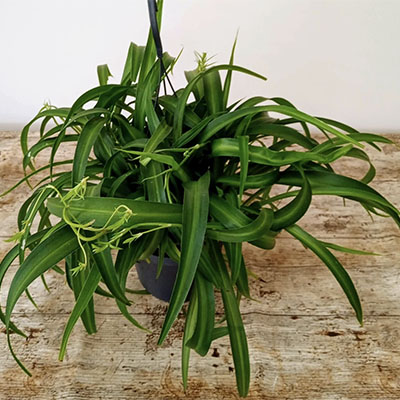
Chlorophytum comosum ‘Bonnie’
The Curly Spider Plant has distinctive curled leaves and a compact growth habit.
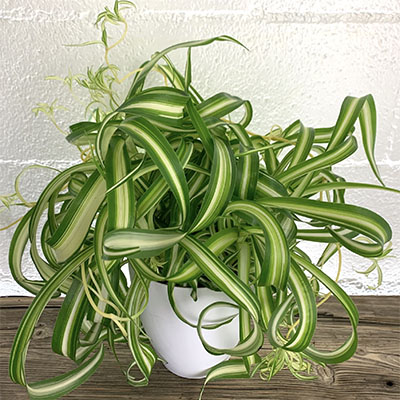
Chlorophytum comosum ‘Bonnie Variegated’
The Variegated Curly Spider Plant has the same distinctive curls but is variegated with cream centers and dark green margins.
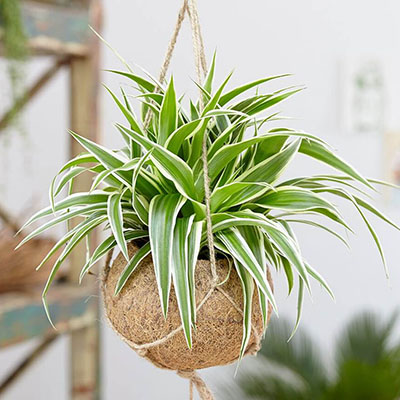
Chlorophytum comosum ‘Ocean’
The Ocean Spider Plant has variegated leaves however it has a much smaller growth habit with leaves only growing to 8-12″ in length.
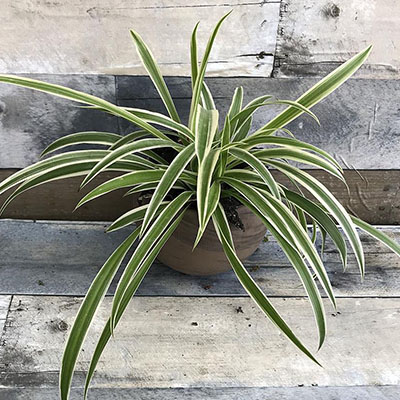
Chlorophytum comosum ‘Variegatum’
As the name suggests, the Reverse Variegated Spider Plant is the polar opposite of the variegated Spider Plant, with dark forest green leaves and soft yellow margins.
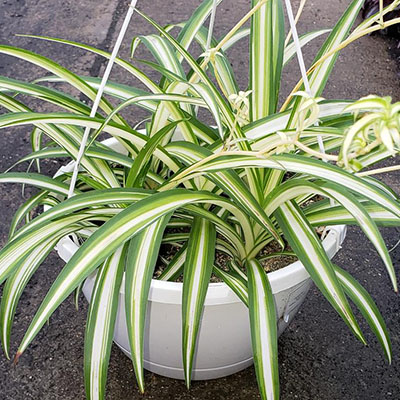
Chlorophytum comosum ‘Vittatum’
The most common variety of spider plants is the Variegated Spider Plant with its medium green leaves showcasing broad creamy vertical stripes. This variety can reach up to 24″ in width and length.

Chlorophytum viridescens ‘Hawaiian’
Another dwarf variety, this mini spider plant gets its name from its bright yellow also glowing leaf centers.
Keep plants in bright to moderate indirect sunlight. Spider plants do not appreciate direct, hot sunlight, which can burn their leaves, causing brown tips and spots.
Grow in a soil-based, well-draining potting mix. Spider plants like even moisture; they don’t like to be too dry or too wet.
Water moderately. In the spring and summer months, keep the soil moist to encourage growth. Do not let the soil dry out too much. Reduce watering in the winter months when growth slows.
Maintain average room humidity. Spider plants do not need additional humidity to thrive.
Spider plants prefer temperatures between 55 and 80°F (13–27°C), which makes them a great indoor houseplants.
Spider plants grow fairly quickly and can easily become pot-bound. Plan to repot a spider plant about every other year.
Spider Plants are not considered to be toxic or poisonous.
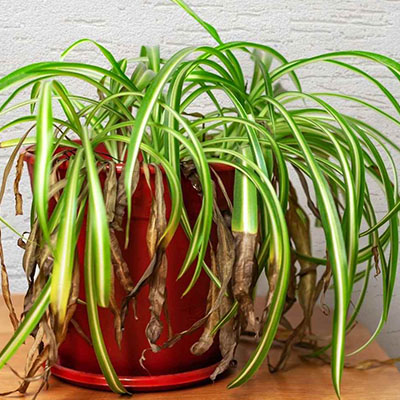
Tip burn can be caused by dry soil, low humidity, or a buildup of salt and chemicals that are found in some public tap water. Keep the soil slightly moist. Avoid watering with fluoridated or chlorinated water and cut off brown tips if they do occur.
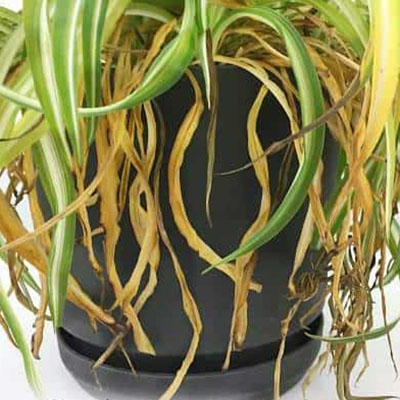
Yellowing wilting leaves is a sign of root rot and can indicate that you should either decrease your watering or repot your plant.
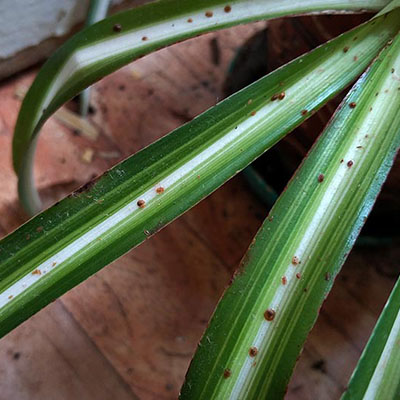
As with most houseplants, Spider Plants are prone to infestations from common pests, such as mealy bugs, scale, fungus gnats, etc…
Management :
To reduce pests on houseplants, you can do the following.
– Keep an even watering routine, not too dry and not too wet. This will help prevent the plant from becoming stressed making it more susceptible to pests.
– Check your plant regularly. At the first signs of pests begin a treatment process to eliminate further damage.
– Always quarantine new plants for 2-4 weeks, to make sure they are pest-free before introducing them into your plant population.